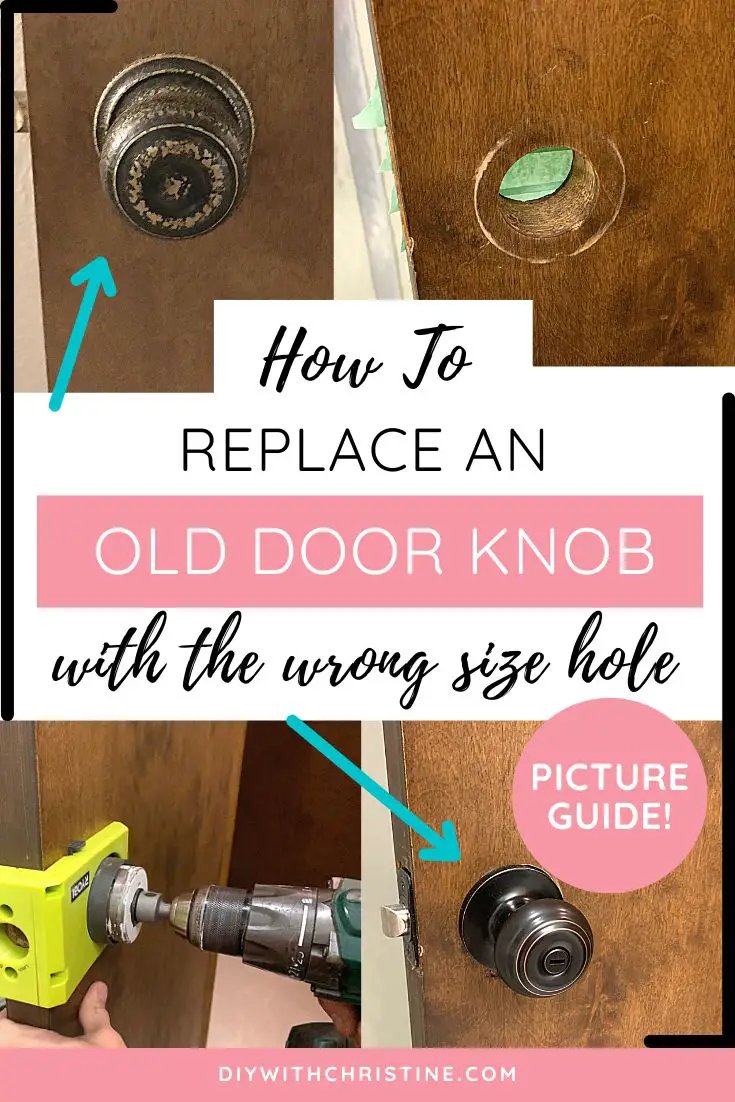
Think of it like fixing a hole in your favorite pair of jeans. You wouldn’t toss them just because of a small tear, right? Instead, you patch them up or sew them back together. Similarly, when you patch those door knob holes, you’re giving your door a second chance. Whether it’s a doorknob that’s been replaced or an old hole left from a previous tenant, fixing it up not only enhances the look of your door but can also save you money on replacing it entirely.
So, how do you actually go about patching those holes? Let’s dive into some practical tips and best practices.
Assessing the Damage
Before you start slapping patch on those holes, take a moment to assess the damage. Is the hole small, or has the previous doorknob left a gaping wound? Understanding the size and nature of the hole helps determine the best repair method.
For small holes, like those left from a standard doorknob, a simple filler might do the trick. But for larger, more extensive damage, you may need a more robust solution, like a wood filler or even a patch kit. Here’s a handy way to categorize the holes:
- Small Holes: Usually less than 1 inch in diameter. Think of nail holes or minor doorknob holes.
- Medium Holes: Between 1 and 2 inches. These could be from old locks or larger doorknobs.
- Large Holes: Over 2 inches in diameter. This may require a patch or new wood piece altogether.
Getting a clear picture makes the next steps much smoother, trust me.
Gathering Your Materials
Once you’ve assessed the holes, it’s time to gather your materials. Don’t worry; you won’t need a toolbox that looks like it’s straight out of a professional contractor’s workshop. Here’s a quick shopping list for patching old door knob holes:
- Putty Knife: A handy tool for applying filler smoothly.
- Wood Filler: Ideal for filling in the holes, especially for wooden doors.
- Sanding Block: To smooth out any rough edges once the filler dries.
- Primer and Paint: To finish off the job and match the door’s original color.
Having these materials on hand not only makes the job easier but also ensures that your repair looks professional. You might be surprised how satisfying it is to patch a hole seamlessly.
Applying the Filler
Now for the fun part—applying the filler! If you’ve never done this before, it can feel a bit daunting, but it’s as easy as spreading peanut butter on bread. Here’s a simple step-by-step guide:
1. Clean the Area: Start by cleaning around the hole. Make sure there’s no dust or debris; you want a clean surface for the filler to adhere to.
2. Apply the Filler: Using your putty knife, scoop a small amount of wood filler and press it into the hole. Make sure it’s packed in tightly. Smooth it across the surface for a clean finish.
3. Let It Dry: Allow the filler to dry according to the manufacturer’s instructions. This usually takes a few hours but can vary.
4. Sand It Down: Once dry, use your sanding block to smooth out the surface. You want it to be flush with the door, so take your time here.
It’s amazing how a little bit of filler can make a world of difference.
Priming and Painting
After sanding down the filler, it’s time to give it a fresh coat of paint. This step not only improves the appearance but also adds an extra layer of protection. Here’s how to do it right:
1. Choose the Right Primer: If your door is a dark color, you might want to use a tinted primer to help cover the patch more effectively.
2. Apply the Primer: Use a small brush or roller to carefully apply primer over the patched area. Don’t be afraid to feather the edges to blend it in with the rest of the door.
3. Let It Dry: Just like the filler, give the primer time to dry fully.
4. Paint Over the Primer: Finally, apply your paint. Again, using a brush or roller, apply thin coats. You may need two coats for an even finish.
It’s often the little details that make a home feel polished and put together.
Taking Care of Your Door
Once your patches are done, it’s essential to maintain the door. Regular cleaning and checking for scratches or new holes can help prolong its lifespan. Here are a few good practices:
- Regular Cleaning: Wipe down your door with a damp cloth to remove dust.
- Inspect for New Damage: Keep an eye out for new holes, especially if you have kids or pets!
- Touch Up Paint As Needed: Don’t wait too long if you notice chips or scratches.
Taking these small steps can keep your door looking fresh and inviting, making your home feel more comfortable.
When to Call in the Professionals
Sometimes, DIY isn’t the right route for every project. If the hole is exceptionally large or if the door is damaged beyond simple repair, it might be time to call in a professional. Here are some indicators that it’s best to hire someone:
1. Extensive Damage: If the wood around the hole is rotting or crumbling, a professional can assess whether a full door replacement is necessary.
2. Inexperience: If you feel overwhelmed or unsure about tackling the project, it’s okay to ask for help.
3. Time Constraints: Sometimes, schedules just don’t allow for a DIY project to be done right. A professional can get the job done quickly and efficiently.
Remember, there’s no shame in seeking professional help—it’s often the best way to ensure the job gets done right.
In conclusion, patching old door knob holes might seem like a small task, but it can make a significant difference in your home’s appearance. By assessing the damage, gathering the right materials, and applying the filler properly, you can transform those unsightly holes into a seamless part of your door. With just a little patience and attention to detail, your door will look new again in no time. Happy patching!
